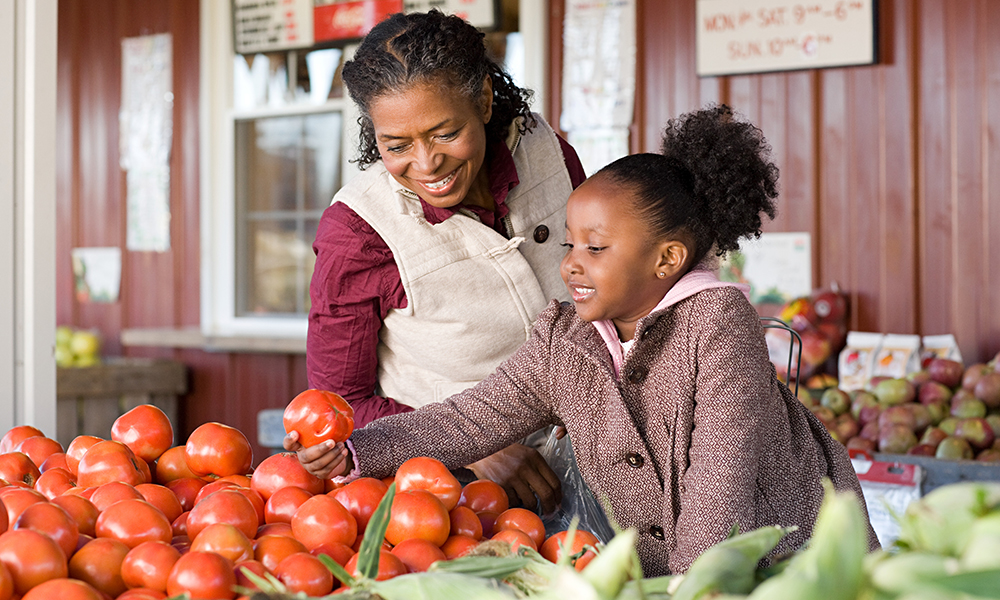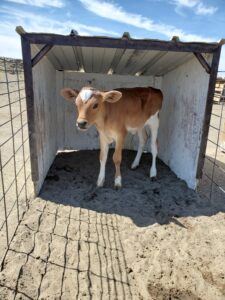With the holidays fast approaching, there are sure to be many gatherings of tradition and meals with family and friends. Whether you’re using a family recipe to make the stuffing or mashing the potatoes just the way you like them, consider the source of your ingredients. How many ingredients can you get locally grown or produced?
Opting for locally grown produce helps you make a nutritious meal for your family and helps improve your local community. Local farmers are strong contributors to the community and to the food chain. They grow the food we need to nourish our bodies and buying direct from farmers or through local food co-ops directly contributes to a strong agricultural community. Not to mention the ingredients are fresher, making your dish even more delicious.
Farm to table isn’t only for restaurants
While many restaurants have adopted farm to table practices, the idea is becoming bigger and is also being instilled in younger generations. Programs that bring farms to schools or farms to cafeterias are growing. This can help support local farmers and offer nutrition education that helps kids learn where food comes from and how to make healthy food choices.
Other ways to engage your family in farm to table practices on a smaller more personal level include planting a garden, keeping an indoor herb garden, and shopping at local farmer’s markets or food co-ops.
Dairy from farm to table
The dairy story really starts from the table to the farm, first. Since dairy cows can eat parts of plants that we can’t eat, many of our food by-products and leftovers go out to the dairy farms to be made into cow food—things like grass, almond hulls, canola meal, citrus pulp and more. Cows have a unique four-chambered stomach that helps transform those plant parts into the delicious milk we love, which then ends up back on our table. It’s really full circle.
Our dairy farmers not only care for their cows, but they also care for the land. They look for opportunities to refine processes and recycle resources on the farm to reduce their environmental footprint.
There are many different pieces that go into bringing dairy from the farm to your home-cooked meal. From jobs at the farm to transportation, distribution and the industry as a whole, there are many people involved in dairy’s journey from farm to table.
So what about local farmers?
Nevada is home to just over 20 dairy farms ranging in size from 500 cows to over 25,000 cows, and as a state ranks 32nd in milk production by volume. Milk is picked up at dairy farms every day of the year—including holidays—and transported to a processing plant where it is tested, homogenized, pasteurized, and bottled.
For dairy farmers dairy farming isn’t just a job, it is a lifestyle that helps support their families and communities while providing a fresh, nutritious and delicious product.
Farm to table recipes
This holiday season, try one of our local farmer’s family recipes. For best results, source your ingredients locally.
Cottage Cheese Pancakes
Ingredients:
• 2 eggs
• 2/3 cup plain yogurt
• 2 teaspoon brown sugar
• 1 tablespoon melted butter
• 1 cup cottage cheese
• 1 cup flour
• 1 tablespoon baking powder
• 1/2 teaspoon baking soda
• 1 tablespoon wheat germ or flaxseed
Instructions:
• Combine all ingredients in large bowl
.
• Heat a large skillet over medium heat, and coat with cooking spray. Pour 1/3 cupfuls of batter onto the skillet, and cook until bubbles appear on the surface. Flip with a spatula, and cook until browned on the other side.
Apple-Cinnamon Baked French Toast
Note from the farmers: When my wife and I hosted a breakfast for our church group, we wanted to avoid the last-minute rush of cooking. So we decided to try this make-ahead French toast. Everyone loved it and requested the recipe.
Ingredients:
• 10 slices day-old French bread (3/4 inch thick)
• 6 eggs, lightly beaten
• 2-3/4 cups milk
• 2/3 cups sugar, divided
• 1 tablespoon vanilla extract
• 4 medium apples, peeled and thinly sliced
Instructions:
• Grease a 9×13 inch casserole dish.
• Combine the bread chunks and chopped apples and lay in an even layer in the bottom of the dish.
• In a large bowl, whisk together the remaining ingredients and pour evenly over bread. Cover the casserole and store in the fridge overnight.
• When ready to bake the casserole, preheat the oven to 350°F.
• Bake the casserole for about 35-40 minutes.
Overnight pull-apart rolls
Melt together:
• 1/2 cup butter
• 3/4 cup brown sugar
• 1/2 teaspoon cinnamon
Butter bundt pan, sprinkle 1/2 cup nuts and 1/2 cup raisins in the bottom. Place 18-20 frozen rolls in the pan and sprinkle with 1 package butterscotch pudding more raisins and nuts. Pour melted mixture over rolls. Cover and let set at room temperature overnight. Heat oven to 375°F bake 25-35 minutes. Covering with foil after the first 15 minutes so it won’t get too brown.



